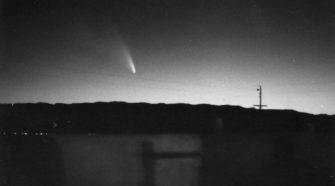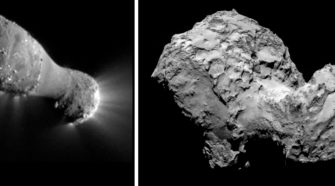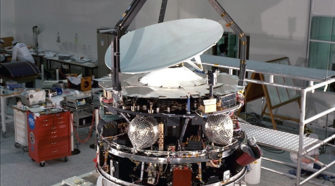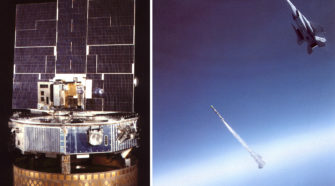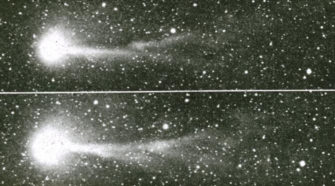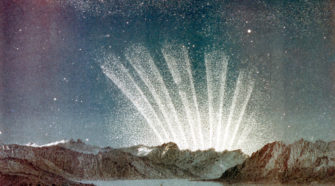Ice and Stone
Comet of the Week: West 1975n
Perihelion: 1976 February 25.22, q = 0.197 AU What I consider to be the best comet I have ever seen was missed by most of the general public. Part of this was due to the fact that it put on its best appearance in the sleepy hours before dawn, but a large part of it …
Special Topic: Fred Whipple’s Comet Model
Once it had become clear that comets are bona fide members of the solar system just as planets and asteroids are, the question then becomes just what their physical nature might be. While they may appear to be fairly large in our nighttime sky, the fact that background stars shine through their tails and their …
Whipple’s Shield protected Giotti
When the Giotti spacecraft launched on its voyage to explore Halley’s Comet in 1985, it was an invention by the son of an Iowa farmer decades earlier that allowed the mission to be successful. The most difficult problem of the mission to overcome was how to ensure that Giotto survived long enough to snap its …
This Week in History: February 23-29
FEBRUARY 23, 1988: David Levy obtains the final visual observation of Comet 1P/Halley during its 1986 return, using the 1.5-meter telescope at Catalina Observatory in Arizona. The comet was located 8.0 AU from the sun and appeared at 17th magnitude. FEBRUARY 24, 1979: The U.S. Defense Department satellite P78-1 is launched from Vandenberg Air Force …
Comet of the Week: Whipple-Fedtke-Tevzadze 1942g
Perihelion: 1943 February 6.72, q = 1.354 AU The name of Fred Whipple is legendary in cometary astronomy. He spent several decades as an astronomer and professor at Harvard University, and is best known for developing what he called the “icy conglomerate” model of a comet’s nucleus (more commonly referred to as the “dirty snowball”) …
Special Topic: Great Comets
Few, if any, sights in the nighttime sky are more impressive than that of a bright, long-tailed comet. It is little wonder that our ancestors of just a few centuries ago, who had little idea of what they were actually seeing, were amazed and perhaps even terrified of the sight, and even today the appearance …

